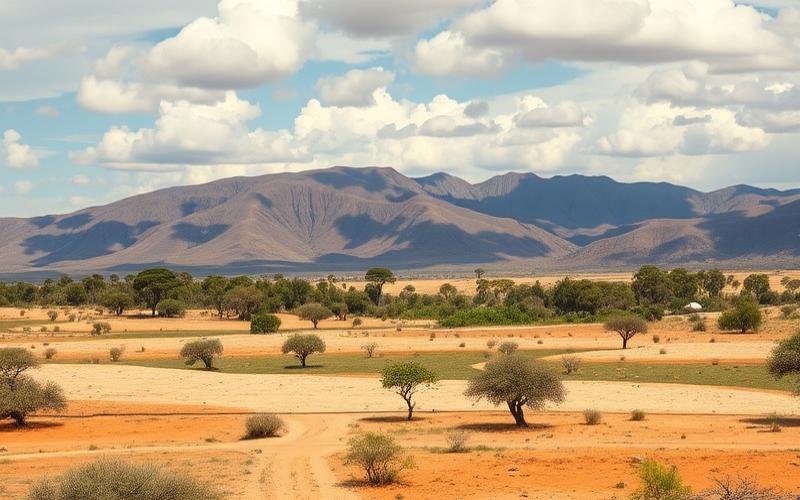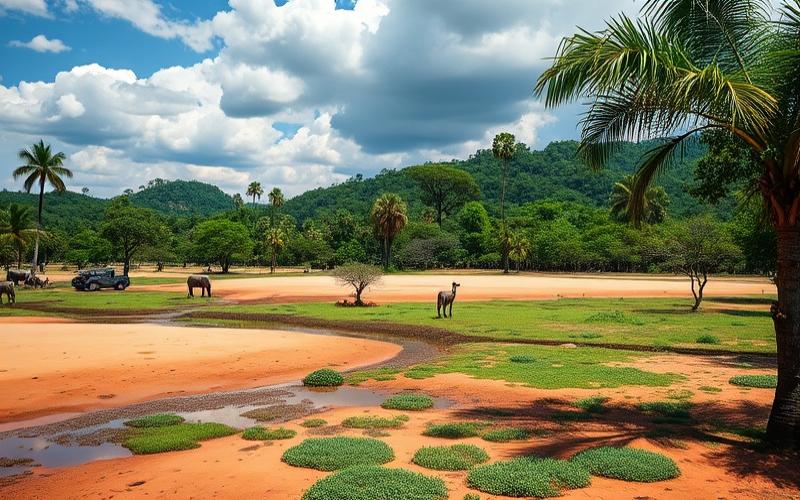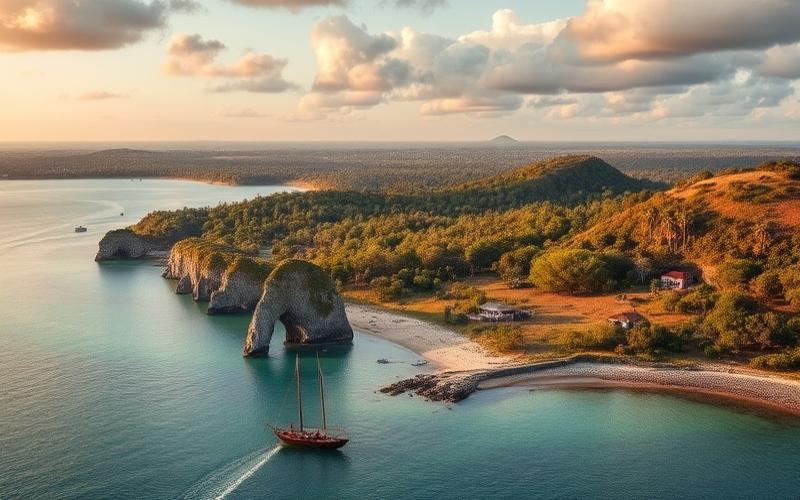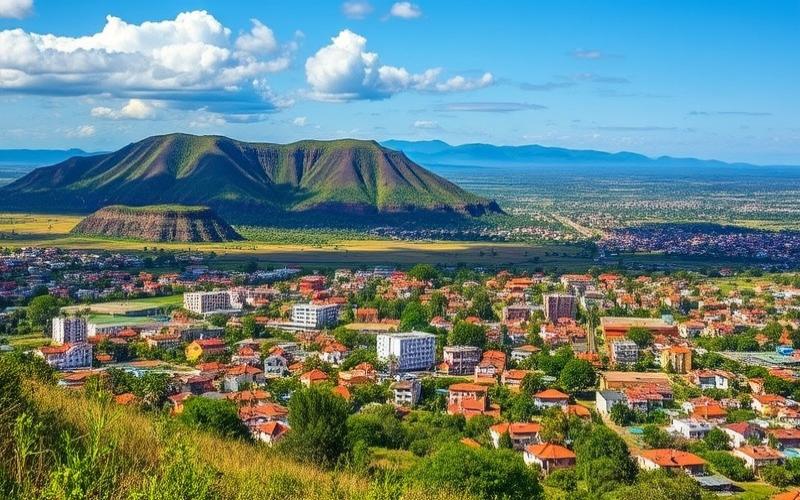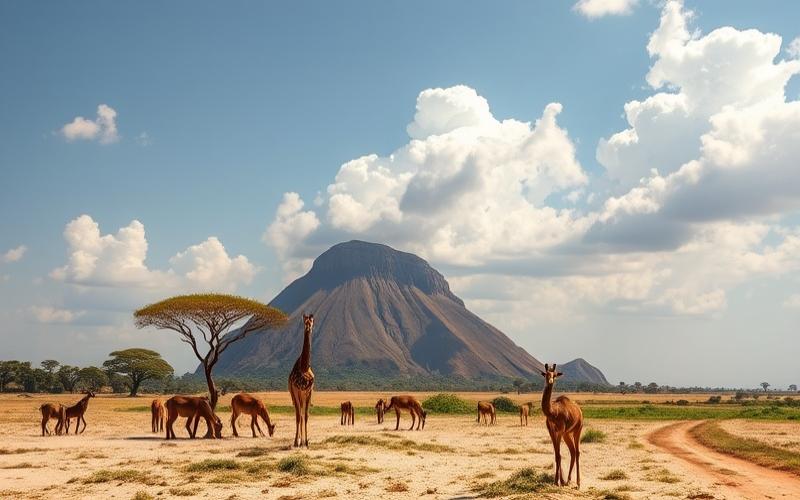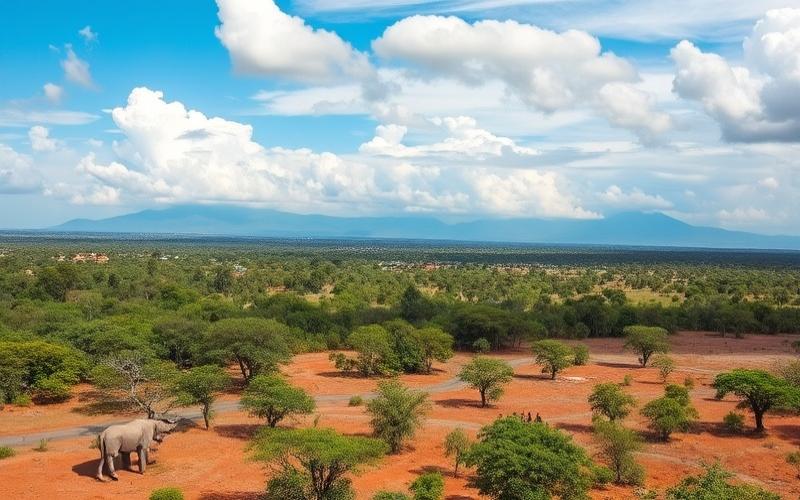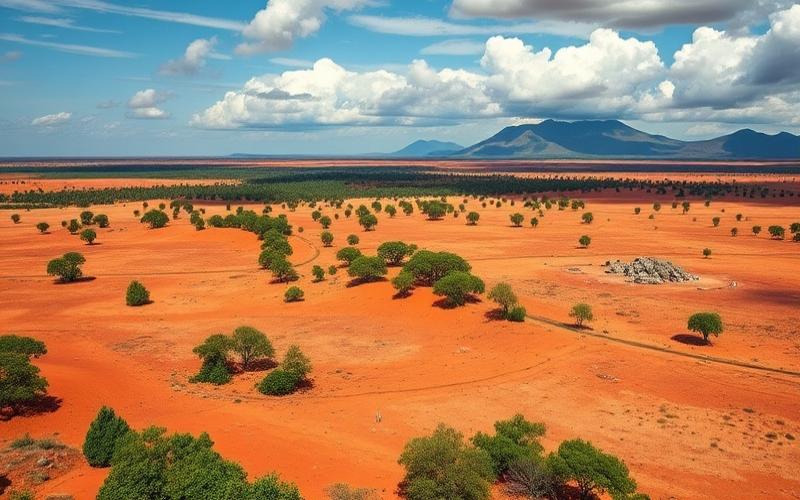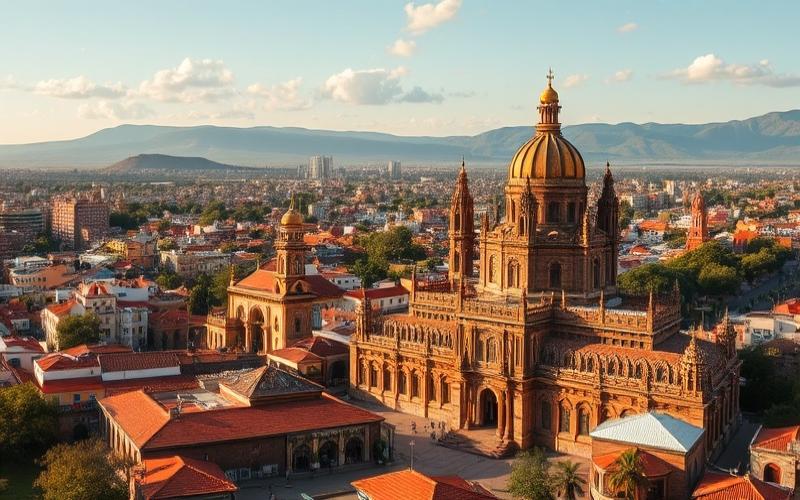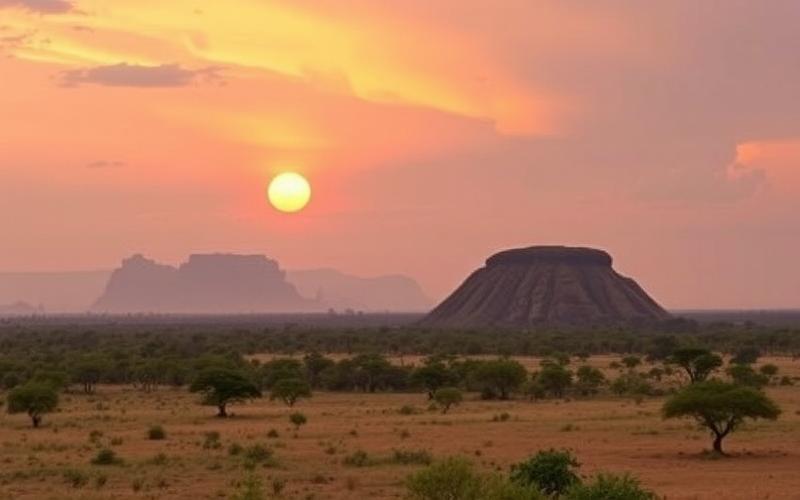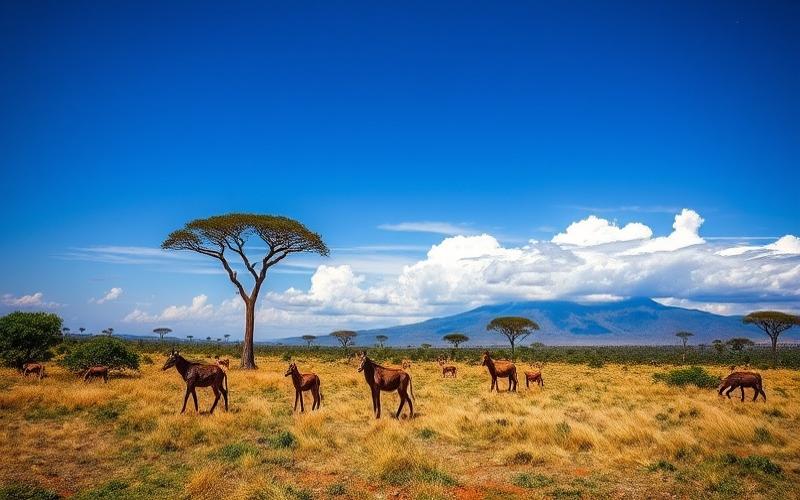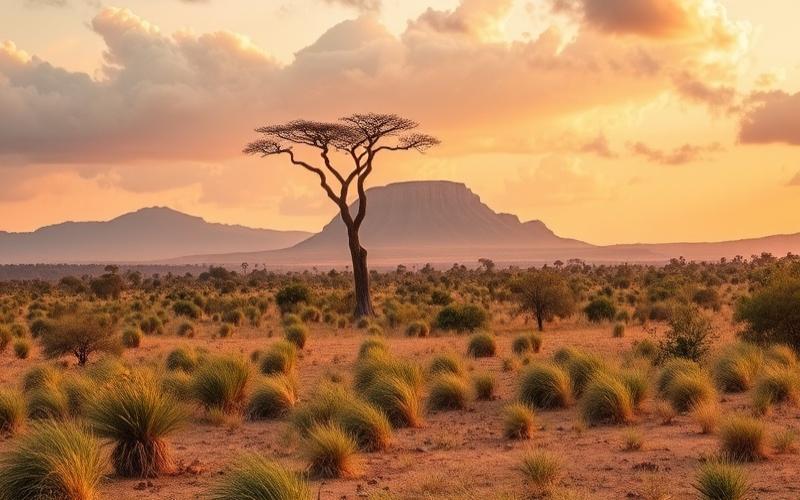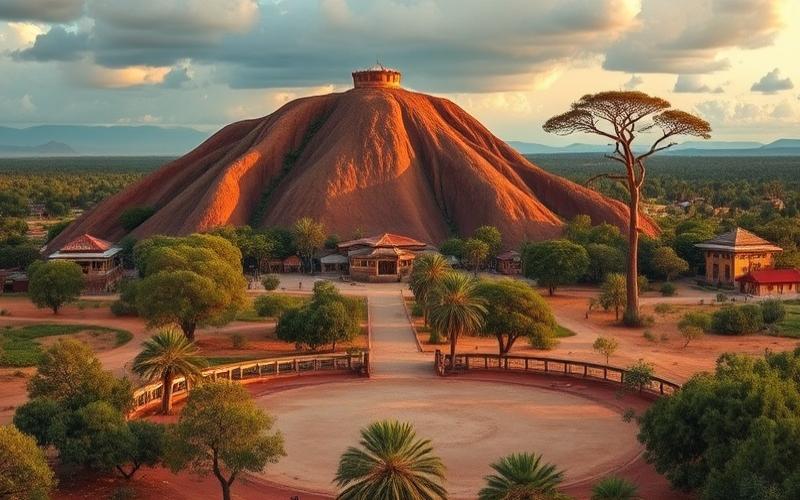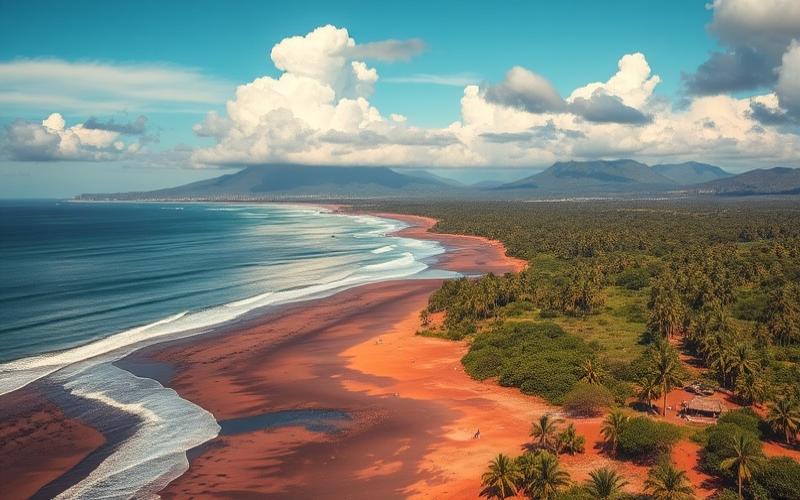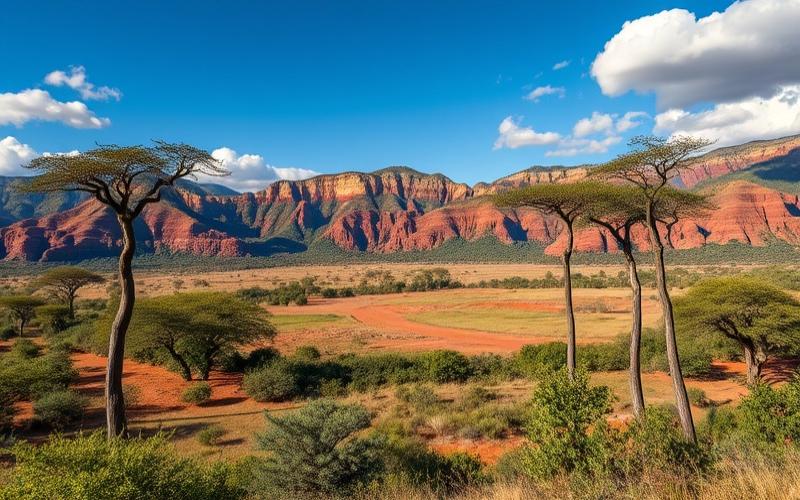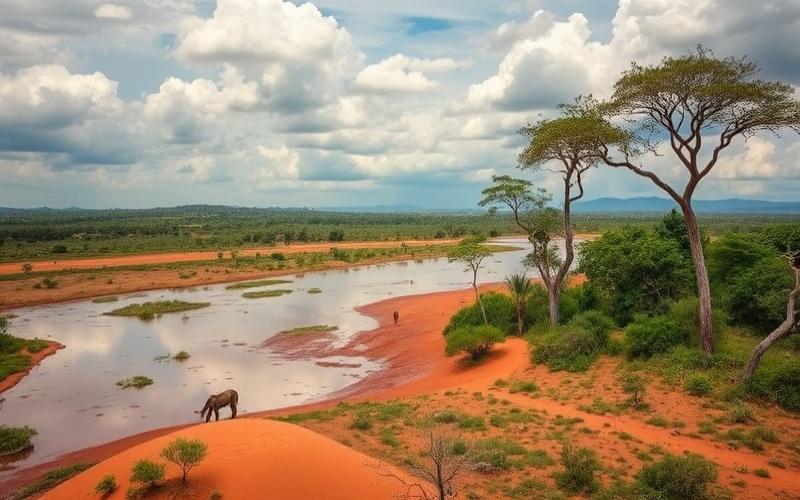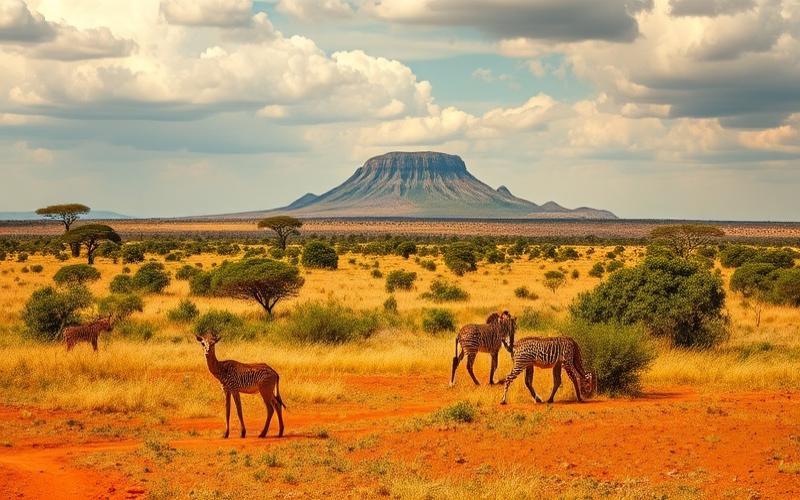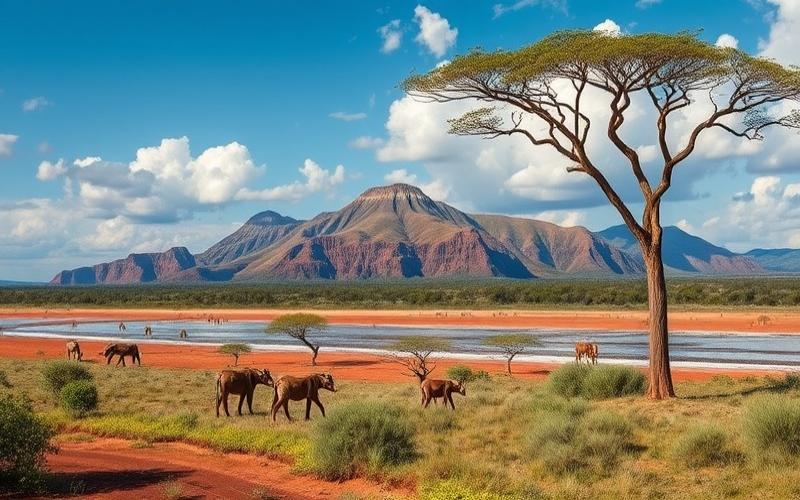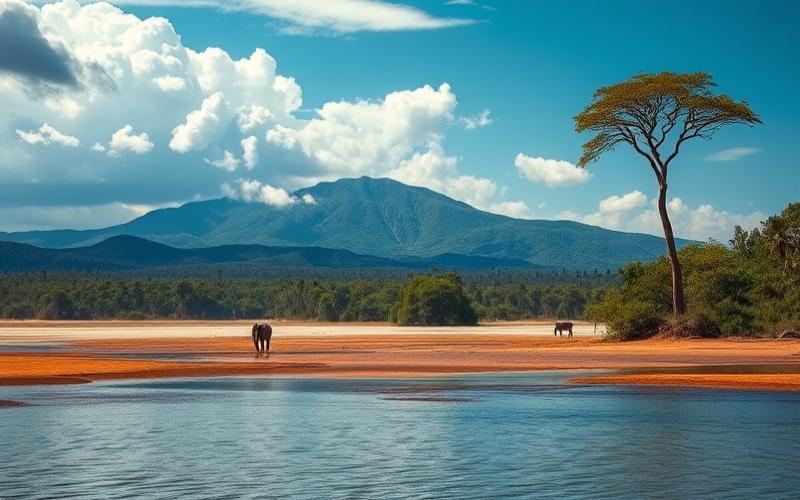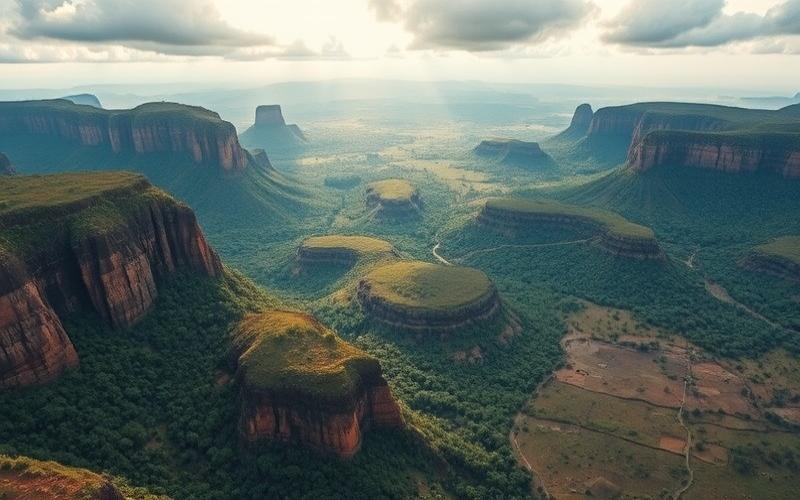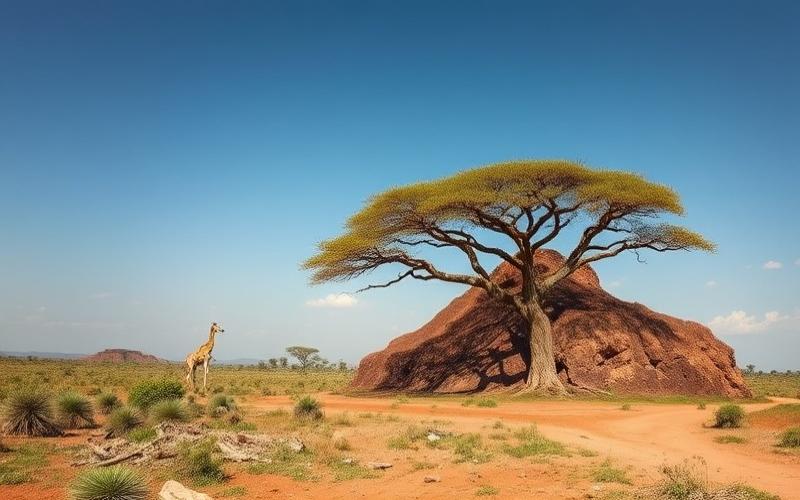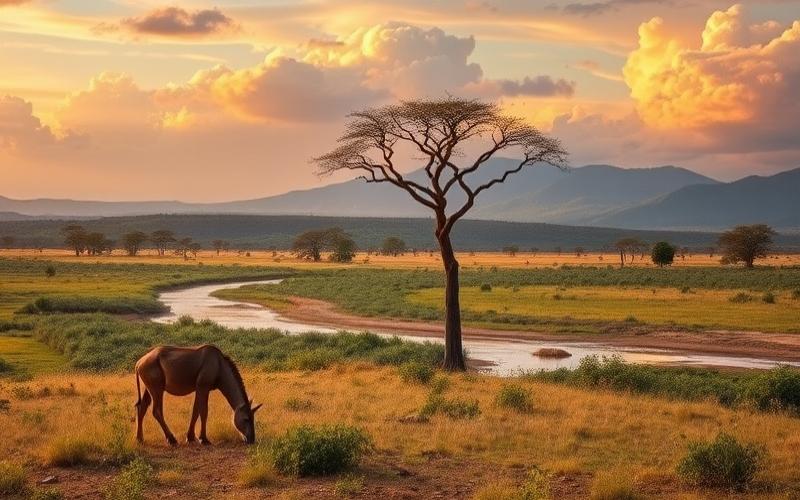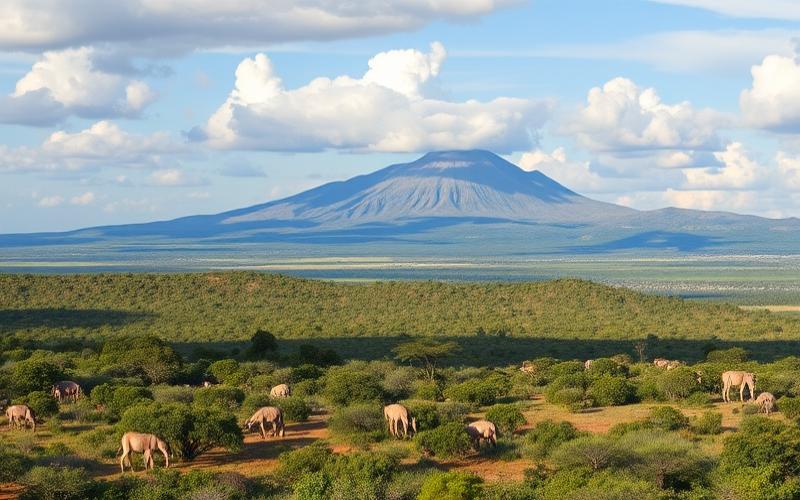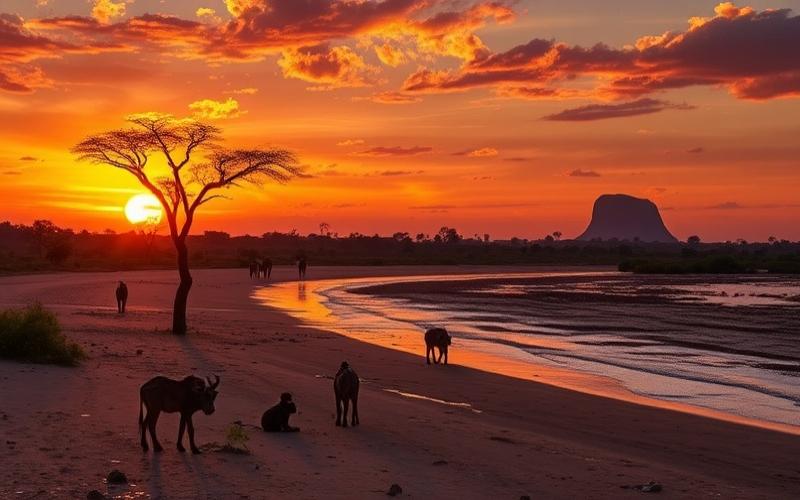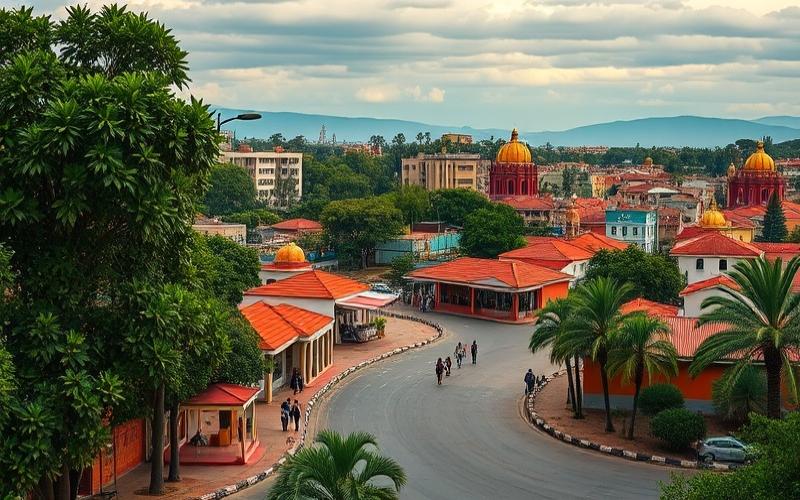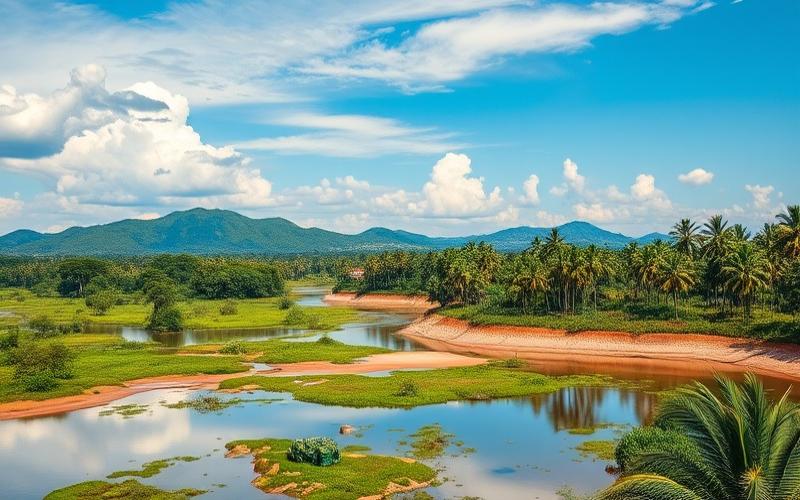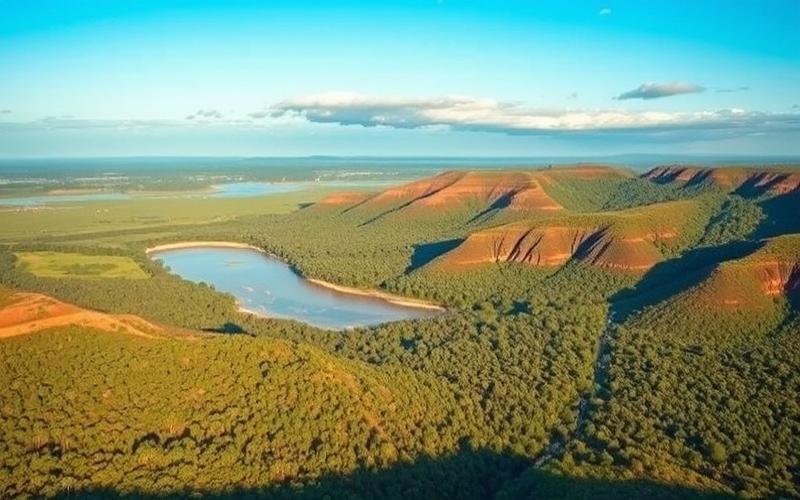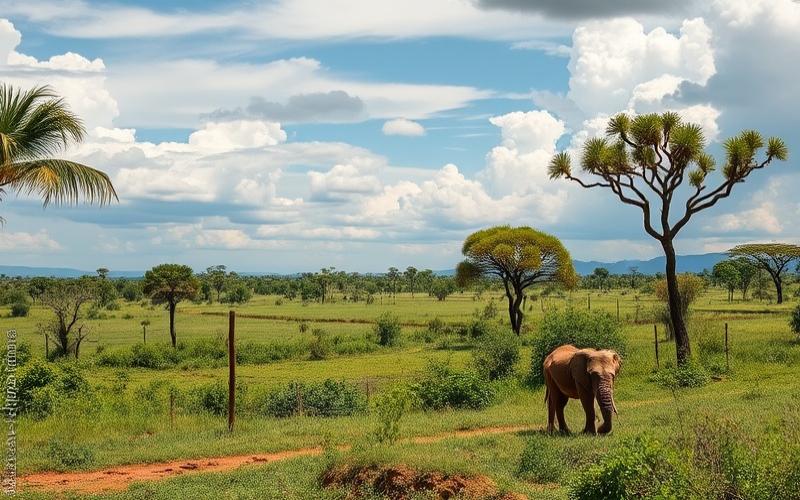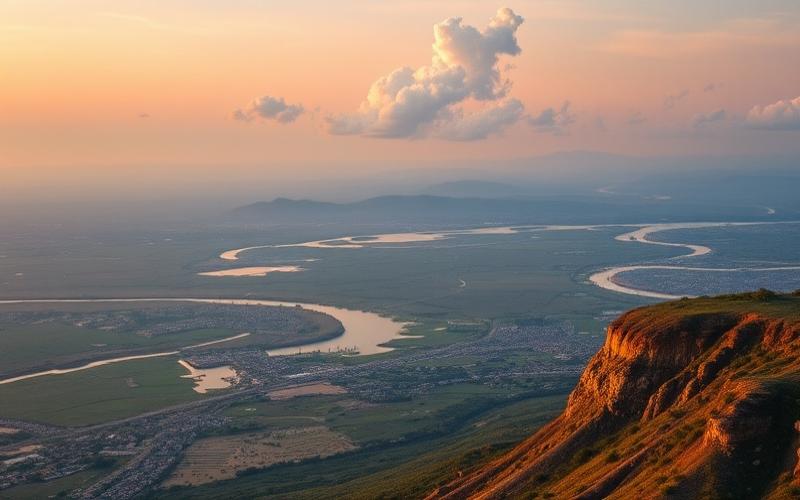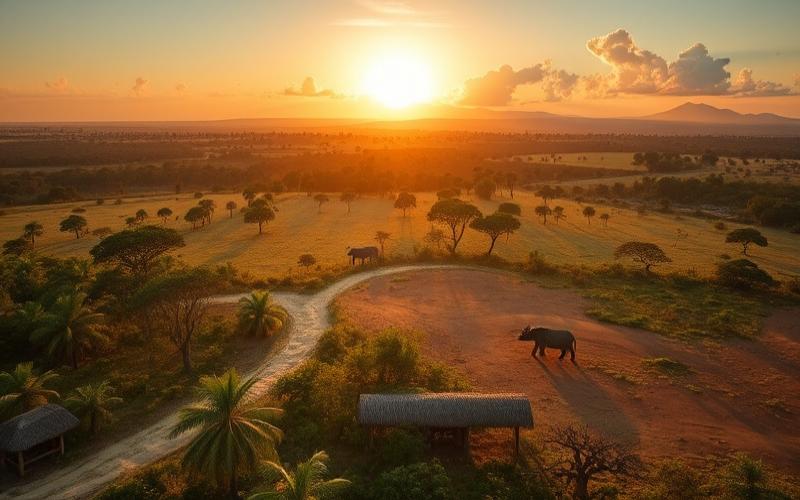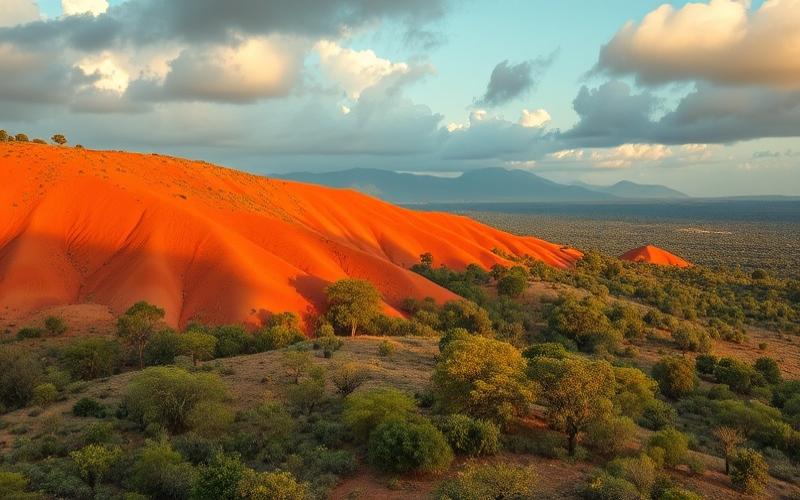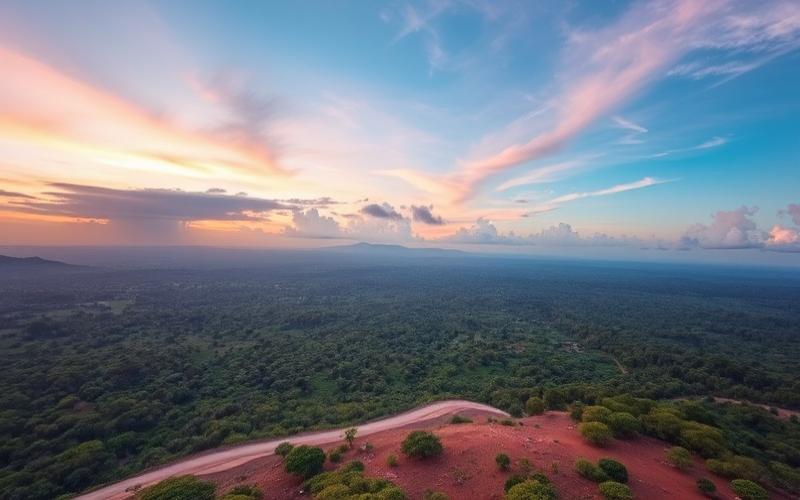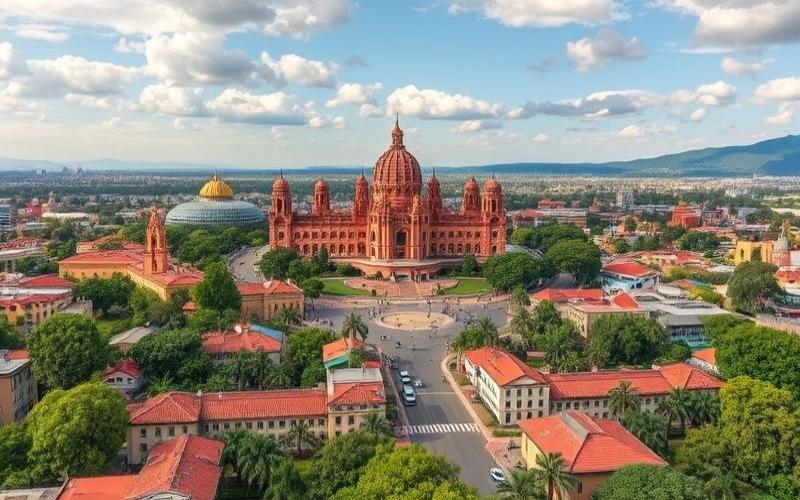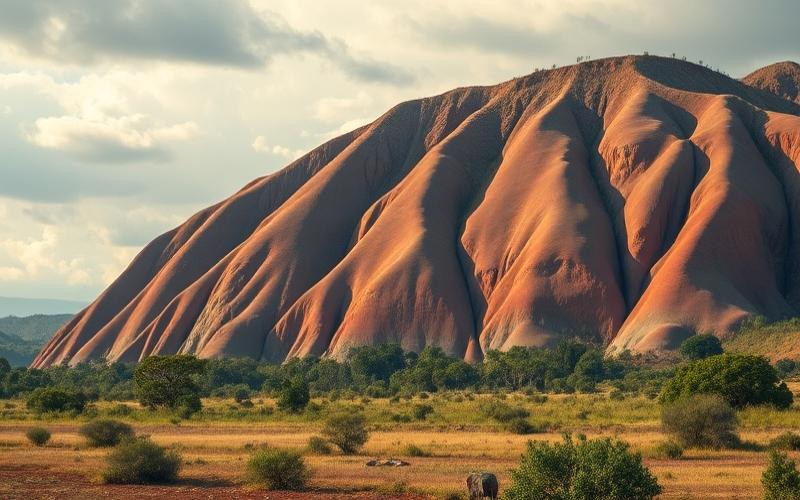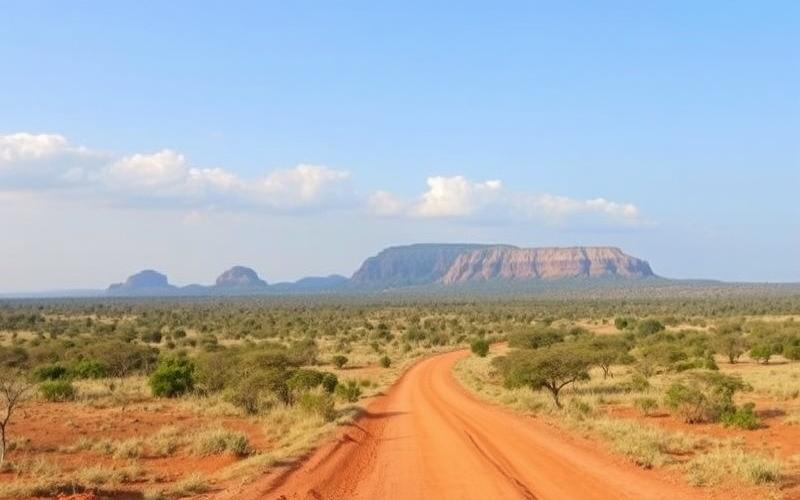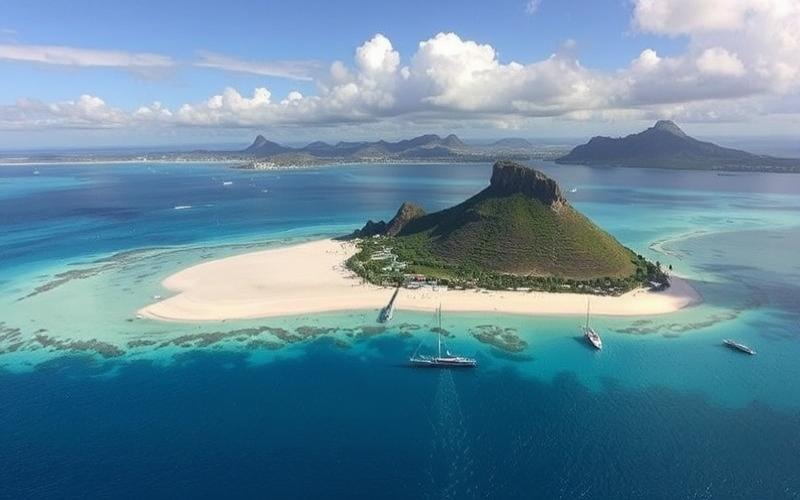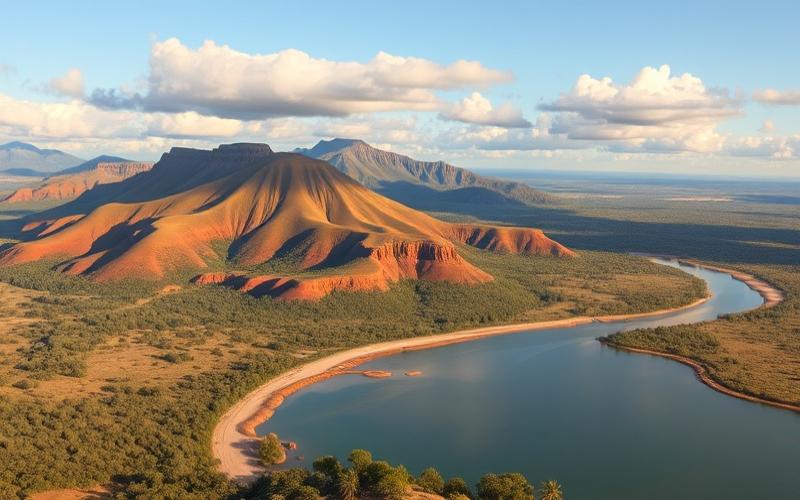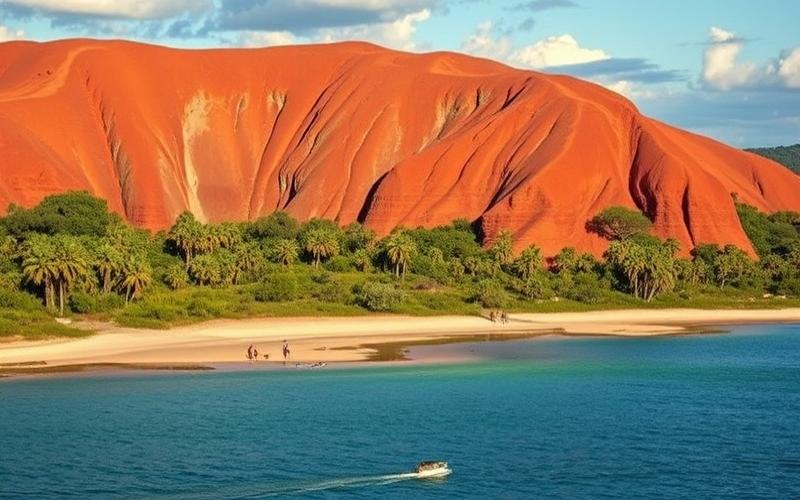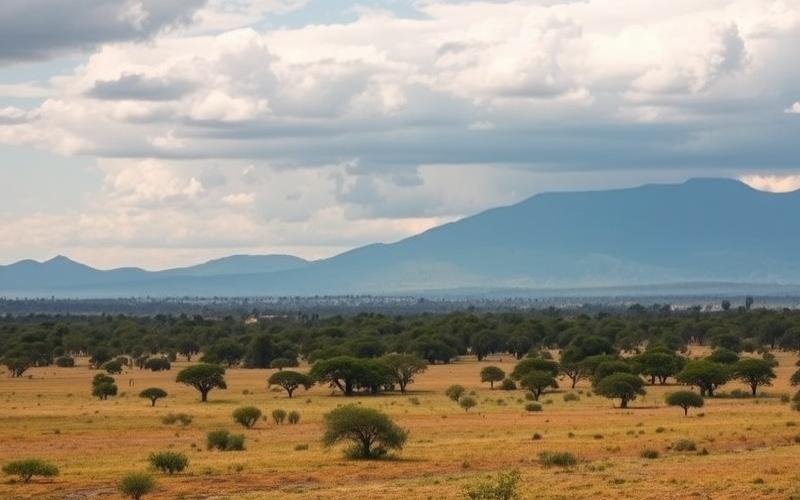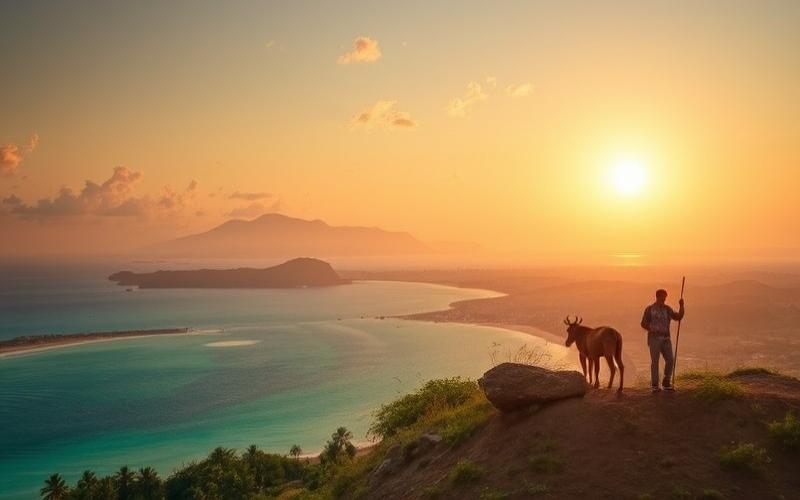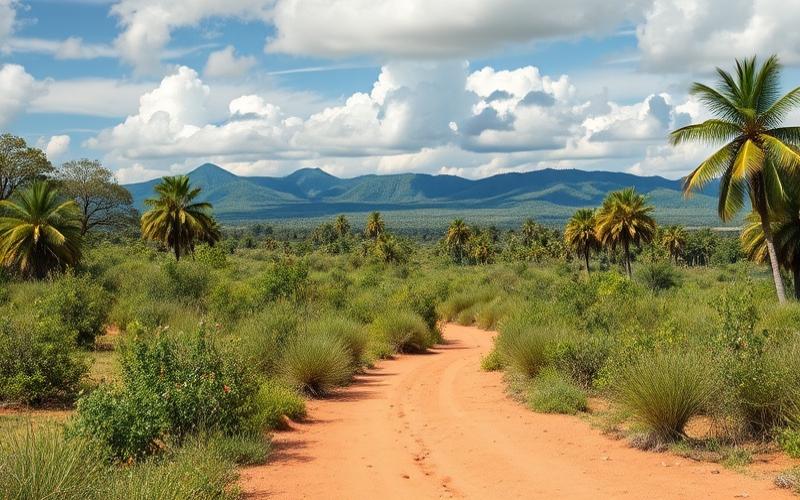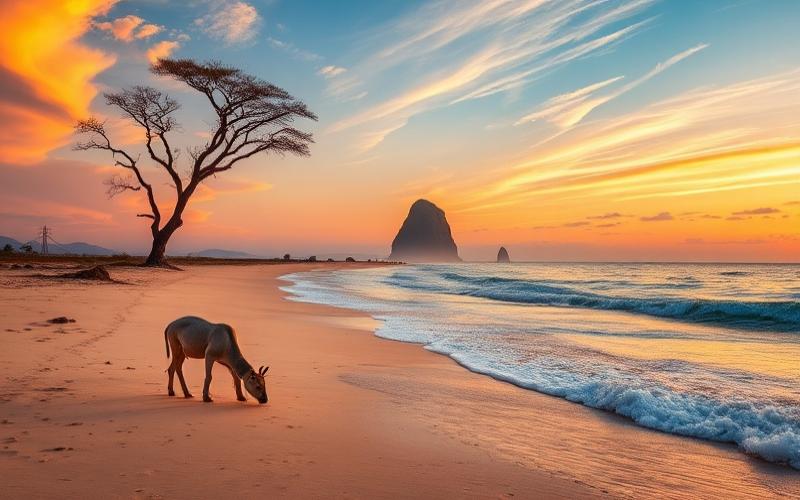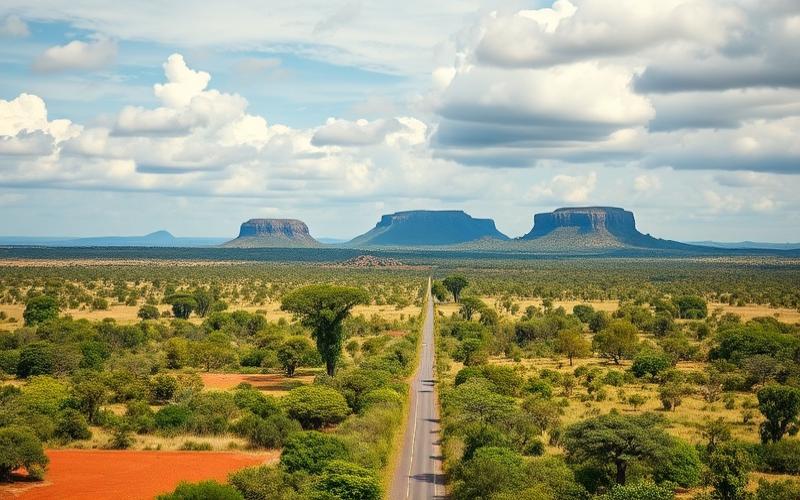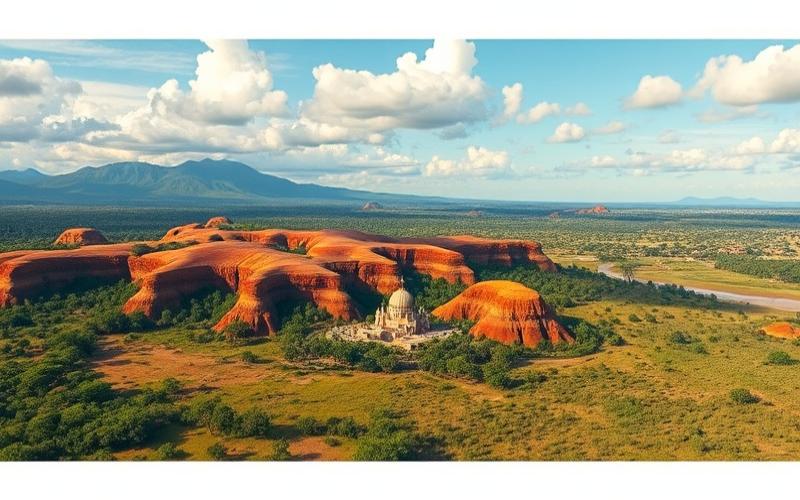
 Published on and written by Cyril Jarnias
Published on and written by Cyril Jarnias
Madagascar, with its breathtaking landscapes and unique culture, is attracting an increasing number of real estate investors. Whether you own a traditional Malagasy home or a modern apartment in the capital Antananarivo, renovation can significantly increase your property’s value. This article will guide you through the essential steps to successfully complete your renovation project in Madagascar, taking into account local specificities and current trends.
Why Renovate Your Property in Madagascar?
Renovating a property in Madagascar offers numerous advantages, both financially and in terms of living comfort. Here are the main reasons why investing in renovating your Malagasy property can be wise:
1. Increased Property Value: In a growing real estate market, a well-renovated property can see its value increase significantly. According to local experts, a well-executed renovation can increase a property’s value by 15 to 30% in Madagascar.
2. Improved Comfort and Quality of Life: Adapting your home to modern standards will allow you to fully enjoy your stay on the island, whether you live there year-round or for vacations.
3. Energy Savings: Although Madagascar enjoys a tropical climate, insulation and the use of appropriate materials can significantly reduce your electricity bills, particularly for air conditioning.
4. Rental Attractiveness: If you plan to rent out your property, a renovated property will attract more potential tenants, whether tourists or expatriates.
5. Heritage Preservation: Renovating an older property helps preserve the charm and history of Malagasy architecture while adapting it to modern needs.
From Planning to Completion: Key Steps for Your Renovation
Undertaking renovation work in Madagascar requires careful planning and a good understanding of the local context. Here are the essential steps to successfully complete your project:
1. Initial Assessment and Project Design
Start with a thorough inspection of your property. Identify areas requiring urgent repairs and those you wish to improve. It’s recommended to consult a local architect or building expert for this assessment. They can help you design a renovation plan that suits Malagasy architectural style while incorporating modern elements.
2. Obtaining Necessary Permits
In Madagascar, urban planning regulations vary by region. In major cities like Antananarivo, you’ll need to obtain a building permit for any significant structural modifications to your building. Check with the local town hall or urban planning office to learn about specific procedures for your area.
3. Selecting Craftsmen and Companies
The choice of professionals is crucial for your project’s success. Prioritize local craftsmen who are familiar with traditional Malagasy techniques and materials. Ask for recommendations, check references, and don’t hesitate to visit ongoing construction sites to assess their work quality.
4. Work Planning
Establish a detailed work schedule considering the seasons. The rainy season (November to April) can significantly slow down outdoor work. Include a safety margin in your schedule to handle unexpected delays.
5. Monitoring and Quality Control
Ensure you regularly monitor work progress. If you can’t be present on-site, consider hiring a local project manager to supervise the construction site and ensure quality standards are met.
Good to Know:
Communication is essential in a renovation project in Madagascar. Make sure you understand local technical terms and don’t hesitate to ask for clarifications to avoid any misunderstandings.
Financing Your Project: Budget and Funding Options in Madagascar
Renovating a property in Madagascar can represent a significant investment. Here are some key points to consider when establishing your budget and exploring available funding options:
Cost Estimation
Renovation costs in Madagascar can vary considerably depending on your property’s location, the scope of work, and the quality of materials chosen. On average, for a complete renovation, you can expect costs ranging from 300,000 to 800,000 ariary per square meter (approximately $75 to $200 per square meter). However, these figures can increase significantly for high-end finishes or complex work.
Budget Allocation
Here’s an approximate breakdown of your renovation budget:
- Structural work (walls, roofing, foundations): 30-40%
- Plumbing and electricity: 15-20%
- Carpentry and coverings: 20-25%
- Painting and finishes: 10-15%
- Contingencies: 10-15%
Funding Options
1. Self-financing: If you have the necessary funds, this is often the simplest and least expensive option in the long term.
2. Bank loan: Major Malagasy banks like BNI Madagascar or BFV-SG offer real estate loans for renovation. Interest rates typically range between 12% and 18% per year, with repayment periods of up to 20 years.
3. Microfinance: For smaller-scale projects, microfinance institutions like ACEP or PAMF can offer more flexible funding solutions with simplified procedures.
4. Crowdfunding: Platforms like Kiva allow raising funds from individuals worldwide to finance projects in Madagascar, including real estate renovations.
5. Government assistance: Although limited, some aid may be available for energy renovation or heritage preservation. Check with the Ministry of Land Planning and Public Works.
Tips for Optimizing Your Budget
– Prioritize essential work and plan aesthetic improvements in multiple phases if necessary. – Compare quotes from several contractors to get the best value for money. – Consider buying materials in bulk to benefit from discounts. – Explore the possibility of using local materials, often cheaper and better suited to the climate.
Good to Know:
Exchange rate fluctuations between the euro or dollar and the Malagasy ariary can significantly impact your budget if you’re funding your project from abroad. Include a safety margin to handle these variations.
Materials and Techniques: Combining Malagasy Tradition and Modernity
The choice of materials is crucial in a renovation project in Madagascar, not only for aesthetic reasons but also to ensure durability and adaptation to the island’s tropical climate. Here’s a guide to help you make the best choices:
Traditional Malagasy Materials
1. Precious woods: Rosewood and ebony, emblematic of Madagascar, are excellent for carpentry and furniture. However, their use is strictly regulated to preserve forests.
2. Cut stone: Ideal for facades and walls, it offers excellent thermal insulation.
3. Bamboo: Lightweight, resistant, and eco-friendly, bamboo is increasingly used in modern construction in Madagascar.
4. Ravinala (leaves from the “Traveler’s Tree”): Traditionally used for roofing, it provides excellent protection against rain and heat.
Adapted Modern Materials
1. Reinforced concrete: Essential for structures, it offers good resistance to frequent cyclones on the island.
2. Anti-corrosion treated corrugated sheets: A durable and economical alternative for roofing.
3. Eco-friendly paints: Choose paints resistant to humidity and mold, common in tropical climates.
4. Ceramic stoneware tiles: Durable and easy to maintain, perfect for floors in hot, humid climates.
Adapted Construction Techniques
1. Natural ventilation: Prioritize architecture that promotes air circulation to reduce dependence on air conditioning.
2. Steep roofs: Essential for rapid rainwater drainage during monsoon season.
3. Elevated foundations: An important technique to protect the structure from moisture and flooding.
4. Thermal insulation: Although the climate is hot, good insulation can significantly reduce air conditioning costs.
Innovation and Sustainability
New approaches are emerging to combine tradition and modernity:
– Compressed earth bricks: Eco-friendly and offering excellent thermal insulation. – Solar panels: An increasingly popular solution to address frequent power outages. – Rainwater harvesting systems: Essential in regions where access to drinking water is limited.
Important Considerations
– Weather resistance: Choose materials capable of withstanding high humidity and heavy rainfall. – Durability: Opt for materials requiring little maintenance, considering the potential difficulty in finding certain products on the island. – Local sourcing: Prioritize locally available materials to reduce costs and support the Malagasy economy. – Regulations: Ensure your material choices comply with local regulations, particularly regarding the use of precious woods.
Good to Know:
Using local materials like raffia or sisal for interior finishes can not only add an authentic touch to your renovation but also support local craftsmanship.
Renovating a property in Madagascar presents unique challenges but also exciting opportunities. Here’s an overview of the main aspects to consider:
Challenges
1. Material supply: Importing certain specific materials can prove costly and time-consuming. It’s crucial to plan ahead and prioritize local solutions when possible.
2. Skilled labor: Although Madagascar has talented craftsmen, finding professionals trained in modern techniques can be challenging, especially in rural areas.
3. Infrastructure: Power outages and water supply issues can slow down work. Plan for alternative solutions like generators.
4. Climate: The rainy season can significantly delay outdoor work. Careful planning is essential.
5. Bureaucracy: Administrative procedures can be lengthy and complex. Be patient and consider hiring a local expert to guide you.
Opportunities
1. Heritage enhancement: Renovation offers the opportunity to preserve and showcase traditional Malagasy architecture, a major asset for tourism appeal.
2. Sustainable innovation: Madagascar is fertile ground for experimenting with innovative ecological solutions, such as using local bio-based materials.
3. Local economic development: By working with local craftsmen and suppliers, your project can directly contribute to the region’s economy.
4. Tourism potential: A well-renovated property, especially if it retains traditional elements, can become a lucrative tourist attraction, whether for seasonal rental or as a guesthouse.
5. Long-term investment: With tourism development and growing interest in Madagascar, a well-renovated property can represent a solid long-term investment.
Tips for a Successful Project
– Find trusted local partners: A good local network can make all the difference in your project’s success. – Be flexible and adaptable: Unexpected events are common in Madagascar. A flexible approach will help you overcome obstacles. – Invest in training: If necessary, consider training your team in the specific techniques you want to use. – Respect local traditions: Incorporate elements of Malagasy architecture and craftsmanship into your project to create an authentic and harmonious result. – Think sustainably: Prioritize ecological solutions that adapt well to the climate and local resources.
Good to Know:
Renovating a property in Madagascar can be an excellent opportunity to explore sustainable construction techniques adapted to the tropical climate. For example, using green roofs or natural ventilation systems can significantly reduce air conditioning needs.
Renovating a property in Madagascar is an exciting adventure that requires patience, flexibility, and a good understanding of the local context. By meeting these challenges creatively and seizing the unique opportunities offered by this extraordinary island, you can not only create an exceptional living space but also positively contribute to Madagascar’s sustainable development.
Disclaimer: The information provided on this website is for informational purposes only and does not constitute financial, legal, or professional advice. We encourage you to consult qualified experts before making any investment, real estate, or expatriation decisions. Although we strive to maintain up-to-date and accurate information, we do not guarantee the completeness, accuracy, or timeliness of the proposed content. As investment and expatriation involve risks, we disclaim any liability for potential losses or damages arising from the use of this site. Your use of this site confirms your acceptance of these terms and your understanding of the associated risks.

